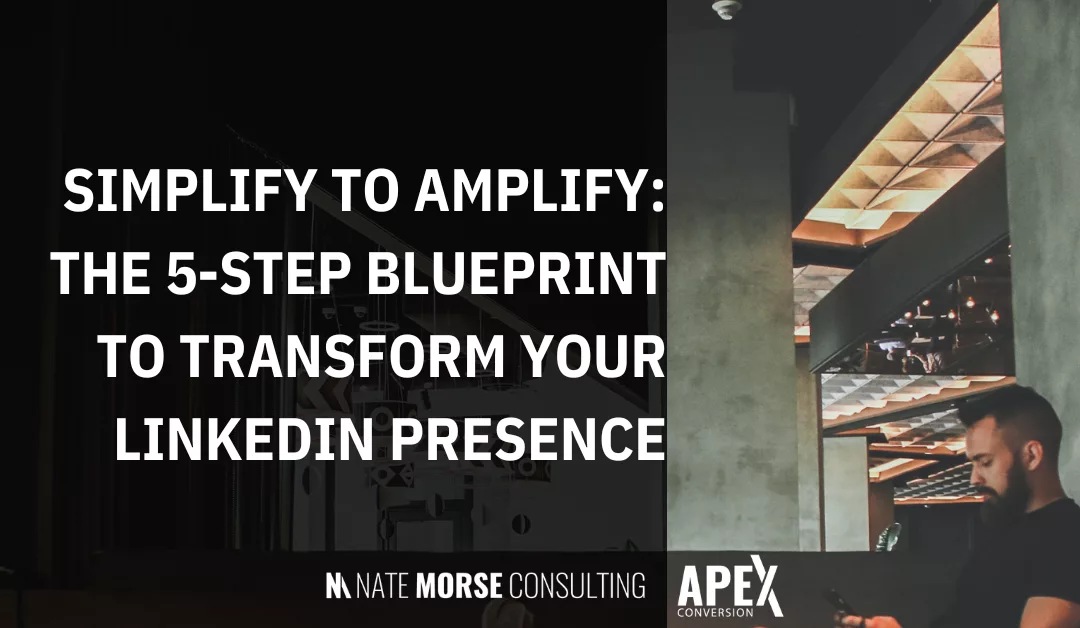
Browsers to buyers: Guiding leads through a buyer’s journey
Your future clients need your help.
They need your help understanding options, knowing what to look for, what to avoid, and all the other obstacles during their buyer’s journey.
Some do this already, but sadly, this journey-driven leadership is fading in a world increasingly driven by superficial tactics.
I see a lot of coaches and consultants trying to get attention, hoping people buy from them.
Unfortunately, this leaves buyers “stuck” in the journey.
Your audience also needs help answering their internal questions.
And if you can’t answer them, they will go find some influencer to help them at which point you aren’t the thought leader anymore.
I am on a mission to catalyze the way coaches and consultants help their ideal clients navigate the buyer’s journey.
Afterall, coaching and consulting is needed before the sale.
Over the course of my 10 year career in the high-ticket space, I’ve been lucky enough to work with some amazing people and businesses.
All of my work has a nucleus that is this: Understand,map out, and help the underserved buyers in the market by being their guide, making them the hero of their own journey.
Imagine this scenario: you stumble upon a LinkedIn profile that piques your interest after liking a post.
Excitedly, you click on it, hoping to learn more about the person behind the profile.
But to your disappointment, all you find is content solely focused on what they sell, nasically reading a brochure.
Now, let’s be honest, if you’re still in the early stages of your buyer’s journey, this profile won’t resonate with you.
And that’s the issue.
Here are a few internal questions that your audience needs to answer before they can start working with you:
- What do I need? Identifying personal or business goals, challenges, and what success looks like.
- Is coaching or consulting right for me? Assessing if this approach fits their learning style, business needs, or personal growth plans.
- Can I afford it? Evaluating budget, potential ROI, and exploring pricing or package options.
- Who is the right coach or consultant for me? Researching qualifications, experience, and compatibility.
- What results have they achieved with others? Looking for testimonials, case studies, and success stories.
- How do they work? Understanding the coach or consultant’s methodology, tools, and communication style.
- What commitment is required? Considering the time, energy, and changes needed to make the most out of the engagement.
- What are the alternatives? Exploring other methods, coaches, or solutions to achieve the same goals.
- How do I get started? Figuring out the process for initiating services, scheduling, and payment.
- What should I prepare? Preparing personal or business information, goals, and questions to maximize initial meetings or sessions.
As coaches and consultants, our goal is to guide individuals on their unique journey.
Compete not just on positioning, but PROXIMITY to where they are at within the buyer’s journey.
To do that successfully, we need to be relevant to them at each stage.
By solely focusing on the end result and skipping the buyer’s journey, we miss out on the opportunity to demonstrate our value and expertise.
Don’t miss the opportunity to give your market a taste of how you work by leading them through the buyer’s journey.
Unless you don’t want to be a leader 😉
I believe in you.
P.S. Want to see how to find the low-hanging fruit in your market on LinkedIn and be the most relevant option they come across? Book a time with me and I’ll show you the process.





